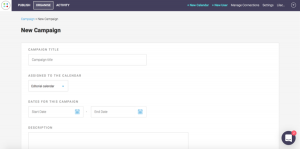Human beings are wired to avoid loss. We fear change because it involves risk—a potential for loss. For this reason, many B2B buying decisions get put off (or worse, permanently tabled). A buying decision involves change. There’s inherent risk. If a purchase doesn’t work out well, the decision-maker could lose a promotion—or lose a job.
So how can you motivate prospects to take action and move forward with a purchase? You need to overcome the fear that’s driving procrastination.
Connect to a powerful fear or anger
One of the best ways to overcome one’s fear is to connect to an opposing, more powerful, fear or anger.
Consider any good superhero movie. The protagonist fears and despises the antagonist. But if the protagonist doesn’t take action, there’s typically a dire consequence—like the world ending.
In order to move your prospects past the fear of change, you need to connect to a greater fear or anger.
What is that fear or anger? It depends on who your prospects are. You’ll need to dig deep into your persona’s psychographics to learn what they care deeply about. What do they stand for? What do they stand against?
Simultaneously, inspire and create a vision of a hopeful future
In order to connect with prospects’ emotions and move them to action, you need a series of messages that not only connect with a strong fear or anger but also:
- inspire prospects with a hopeful vision of the future
- make prospects excited about your company because of what you stand for or against
Types of messages that drive action
Not all messages that drive action look the same. Some are short phrases; some are a series of messages that work together to tell a story and paint a picture. Others are somewhere in between. You may even want to create several messages and use them in different ways.
1. The rallying cry message
Nike’s ubiquitous “Just Do It” serves as a rallying cry. You may have a single galvanizing tagline that comes to life in different ways, through different stories in your marketing. Will any of us ever forget the Colin Kaepernick ad or the Dream Crazier ad with Serena Williams?
2. The change message
A message that describes the change your company creates can be a powerful motivator. Tim Ferriss’s 4 Hour Workweek is a great example. Regardless of what you think of his methodology, you can’t deny that his message has motivated a whole lot of people to buy into his ideas and brand.
3. Pain point and aspirational messages
HubSpot has an evolving series of messages that appear in their marketing, and more obviously, at their yearly INBOUND conference. The messages are worded differently, but no one ever has to wonder where HubSpot stands or what they’re fighting for. And HubSpot’s fans love them for it.
A messaging platform like HubSpot has created is made up of multiple messages that work together. These messages focus on the pain points your prospects are experiencing and, on the flip side, their goals or what they aspire to.
A messaging platform that works to create a movement
Messages that are connected to a powerful fear or anger and create a vision of a hopeful future drive action. But they do more than this. They galvanize people to share the message with others who have the same fears, anger, hopes, and dreams. When this happens, you create more than just marketing. You create a movement.
Business & Finance Articles on Business 2 Community(49)






